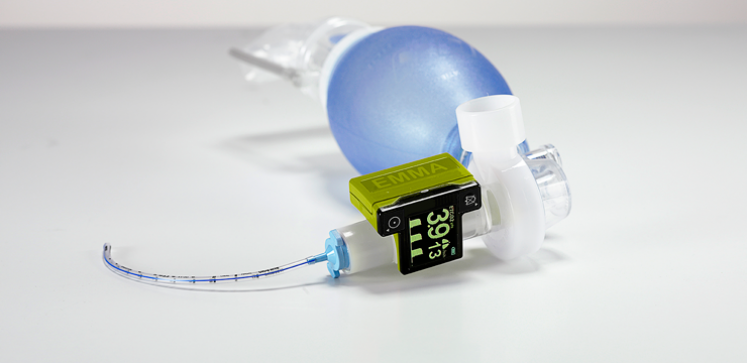
The importance of waveform capnography on intubated patients
MEDACX is a key advocate of the ‘importance of Capnography’. First introducing the EMMA Capnometer in 2005. Following on from the ‘huge success’ of the EMMA Capnometer and building on over 8 years of proven application experience in the United Kingdom, in 2014 the EMMA Waveform Capnograph a ‘second generation technology’ was introduced in the UK.
EMMA Waveform Capnograph has rapidly built upon on its reputation, now with its waveform display and breath by breath EtC02 and Respiratory Rate values plus a ‘pulsing heart’.
It’s the first choice for hospitals ED, ICU, PICU, NICU, ambulance/emergency teams and organisations in the United Kingdom, Europe and around the world.
EMMA Waveform Capnograph – truly portable waveform capnography from MEDACX
EMMA Waveform Capnograph provides Hospitals and Emergency teams with compliance to NAP4, Intensive Care Society, AAGBI and ALS guidelines on the use and importance of waveform capnography and more… with 8 hours continuous monitoring, battery powered, lightweight, unobtrusive in use, clear and precise EtC02 waveform display together with EtC02 and Respiratory rate values opens up its use for both intubated and non-intubated and importantly for Adult, Paediatric, Infant and Neonate patients. Confirming efficacy and patency of endotracheal tube placement; providing early recognition of ROSC, instant feedback of effectiveness of CPR, indication of Hypercapnia & Hypocapnia states, essential warning for blocked airway in use. It is ideal for patient transfer Theatre to Recovery, Intra-hospital or Pre-hospital and can be used on i-Gel, ETT tubes and on bags and face masks.
References
2011 NAP4 Report & Guidelines: highlighted the essential use of Capnography for intubated patients and the report stated: Capnography is mandatory during general anaesthesia to confirm continual intra-tracheal placement of the tube, its patency and also to guide effective alveolar ventilation. Capnography should be used for all intubations and for all anaesthetised patients and should be used for intubated patients during transfers department to other departments.
2011 Intensive Care Society – Standards for Capnography in Critical Care - endorsing use of Capnography.
2016 Update of: 2011 Intensive Care Society – Standards for Capnography in Critical Care highlighting the importance of waveform Capnography use.
2015: European Resuscitation Council issued NEW 2015 ALS Guidelines, with particular emphasis on the use of waveform capnography to confirm and continually monitor tracheal tube placement, quality of CPR and to provide an early indication of return of spontaneous circulation [ROSC].
For further information contact: MEDACX Limited
Tel: +44 (0) 2392 469737 Email: info@medacx.co.uk Website: www.medacx.co.uk

